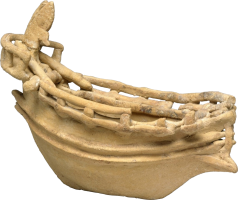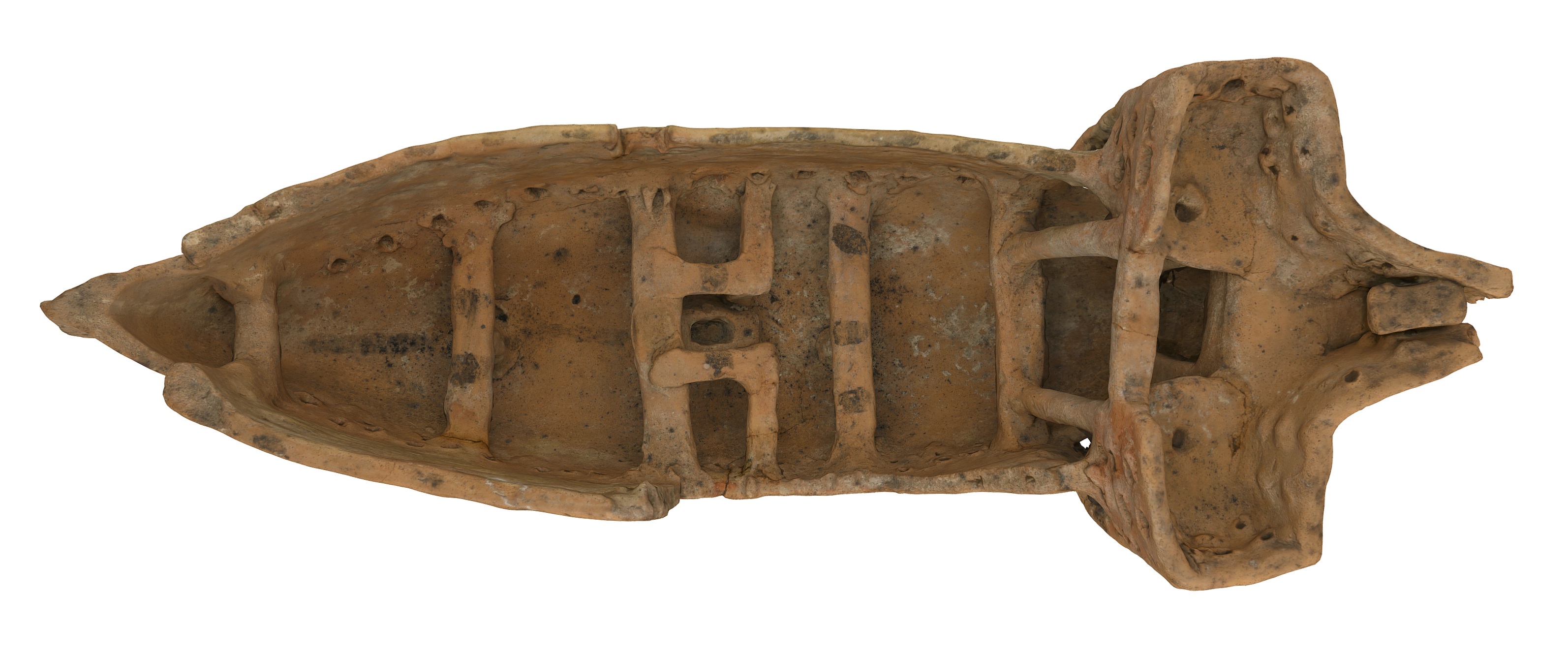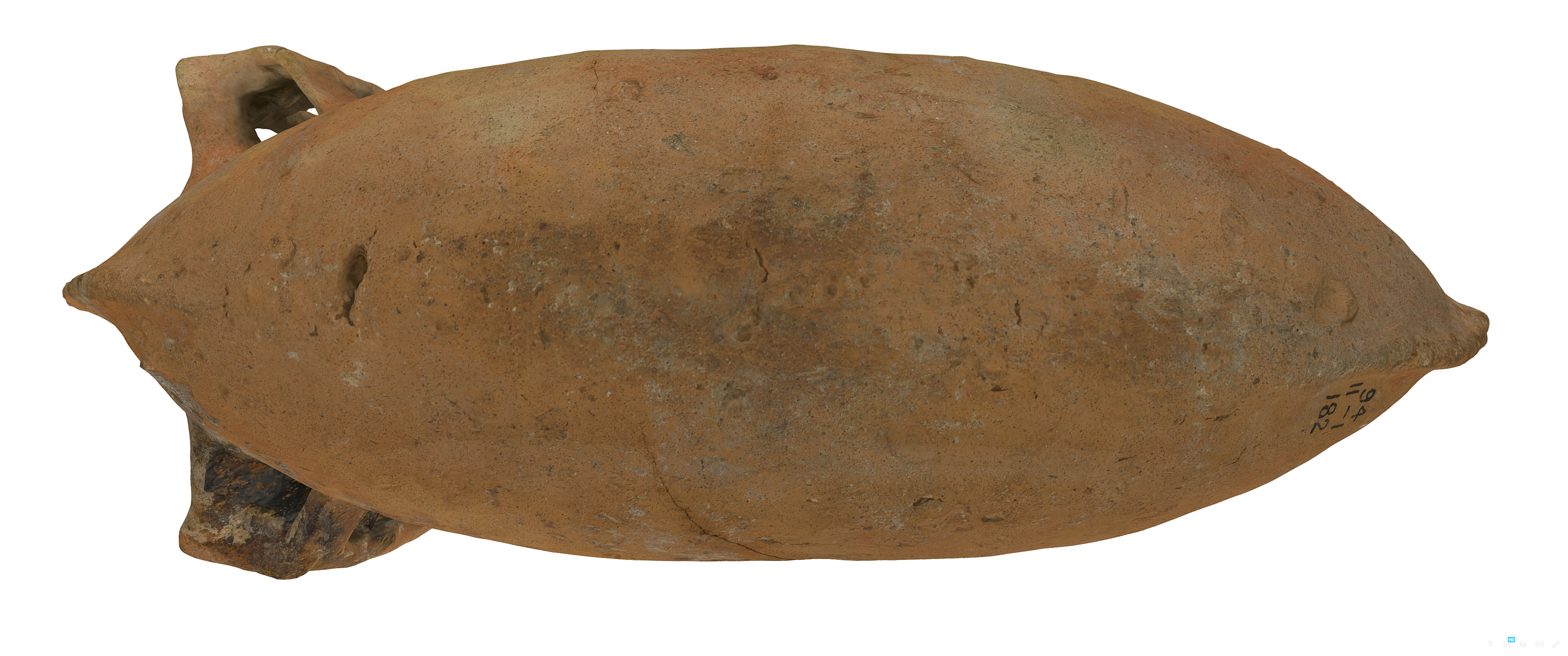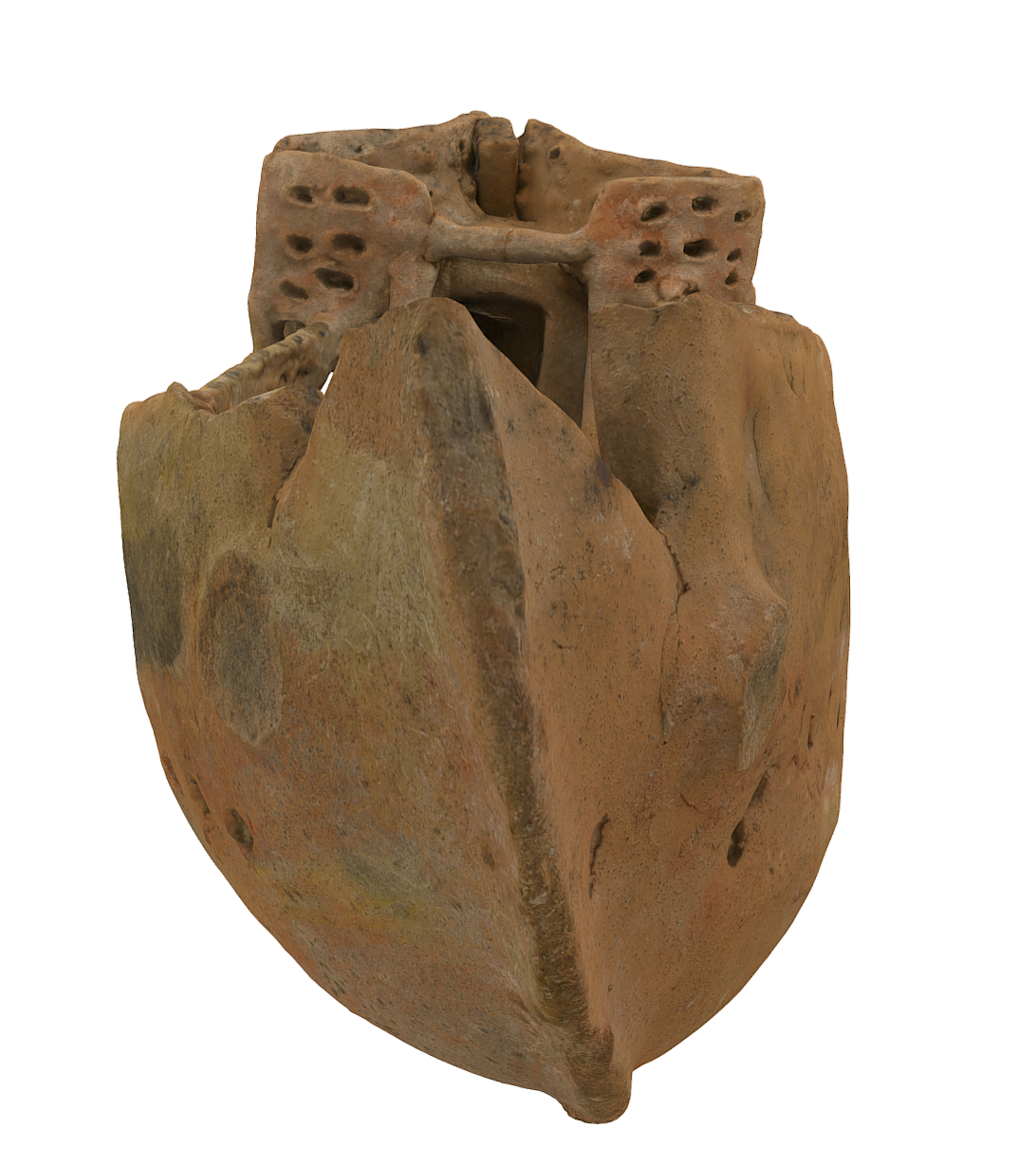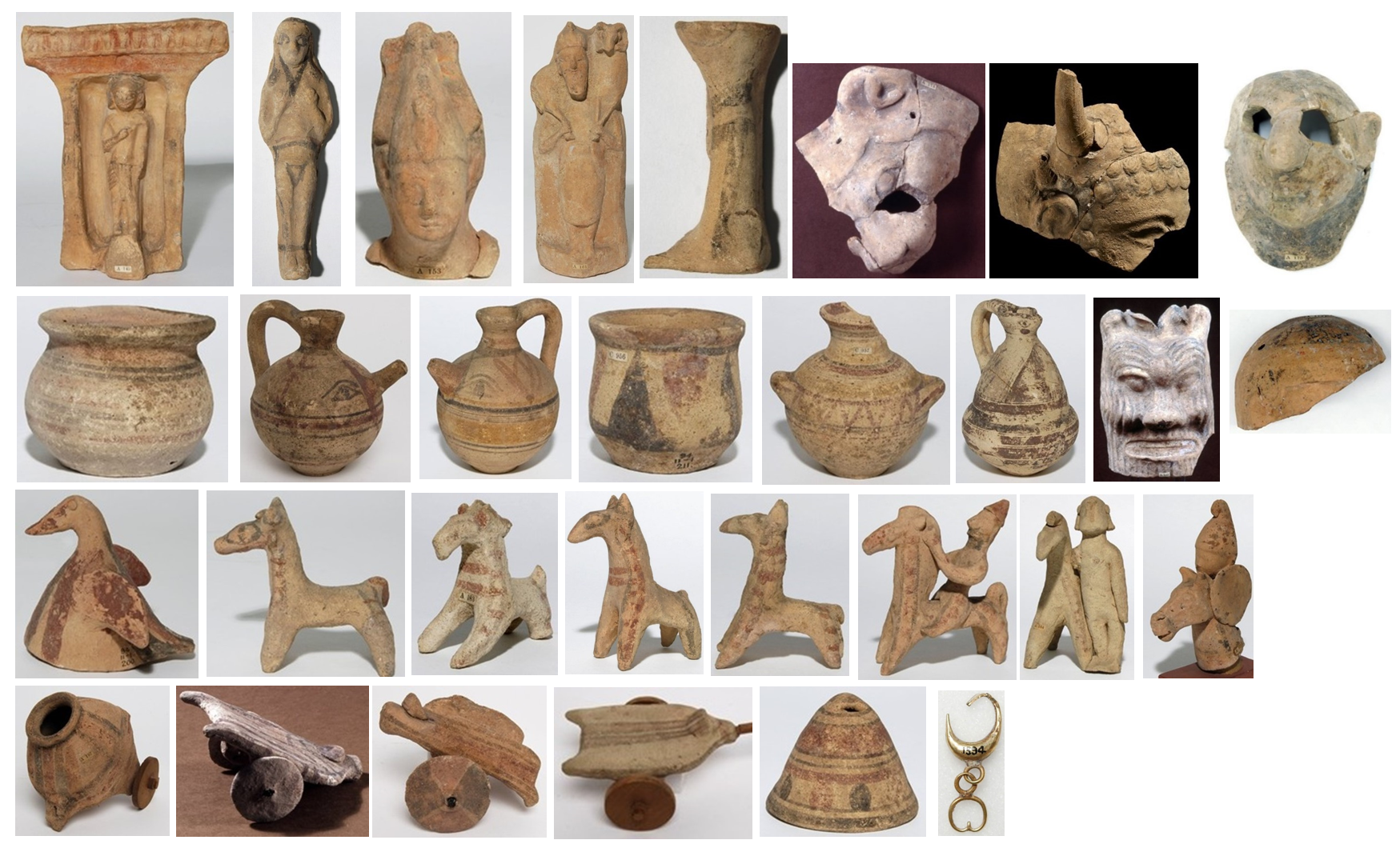Heavy crescentic hull with a rounded bottom and a pronounced tumble-home (beam wider at water-line than at gunwale level). The stems curve rather steeply, with the stern rising 3.5 cm above gunwale while the stempost is damaged. Running along the length of the hull at the level of the lower part of the steering shaft are a series of pierced holes which may have served as either scuppers or oar-holes. In favour of the scuppers interpretation is the fact the middle hole where the largest amount of water would be drained is bigger than the rest. This is consistent on either side of the hull, with the middle hole being about twice as large. The holes are furthermore placed slightly above the level of the interior cross-beams, potentially indicating the presence of a lower inner deck. The model has a highly detailed, elevated poop-deck protected by a latticed bulwark on the external sides of the ship. It is supported by two short pillars from a lower deck which can be reached via a rectangular hole. Attached to the poop-deck on the outside of the hull on either side are two large vertical, partially open shafts. On each side of the poop-deck there is a downward circular hole connected with these vertical shafts. Consequently, these are confidently identified as holders for the steering oars, with one oar made of iron reported in the original excavation but now lost. The poop-deck occupies roughly a quarter of the ship's length, with the lower deck likely serving as living quarters. The raised mast-socket amidships is framed by a cross beam arrangement. There are additional cross-beams fore and aft, as well as a smaller cross-beam at the bow which is connected to two curs on either side of the gunwale. These probably served to faster the anchor line.
The ship's painted details are now highly faded, in contrast to the original excavator's report which describes the model as brilliantly painted in yellow and black against the red colour of the clay. On the outside, there is a black line c. 1.5 cm wide running from the stern shaft to bow. On the inside, the keel line is painted in black, while the cross-beams have black dots which were probably meant to represent fastening points for stays and sheet-lines. According to the excavation report, the iron steering paddle was found attached to one of the shafts, on the port side. It is also suggested that some object, perhaps human figure, is missing from second thwart.





